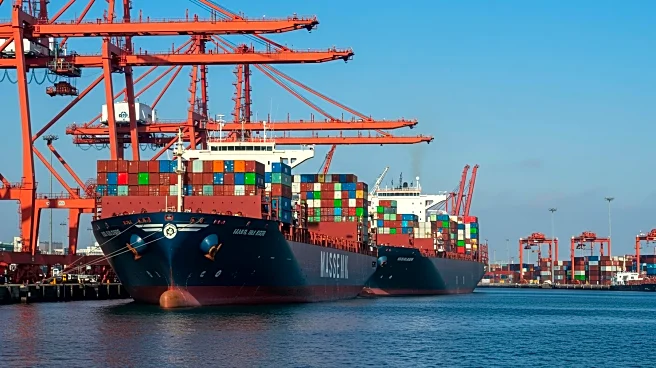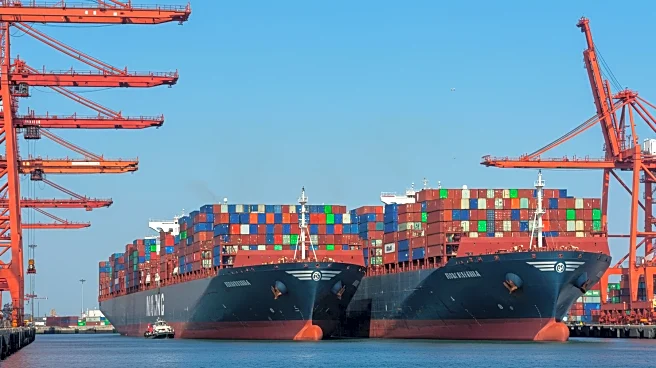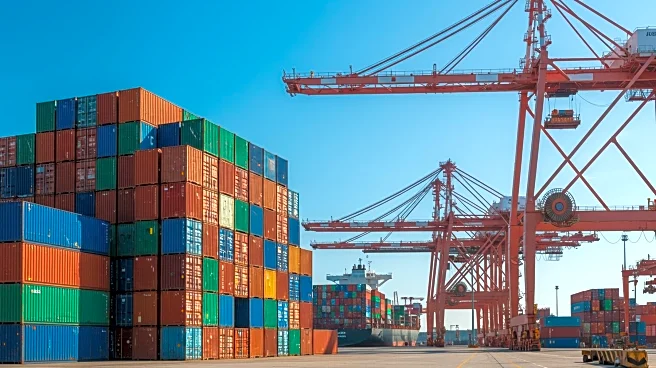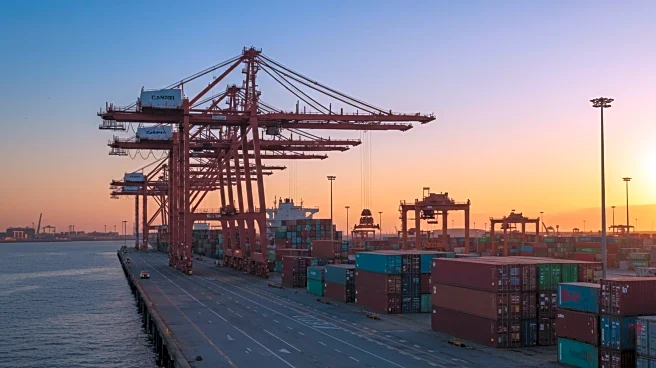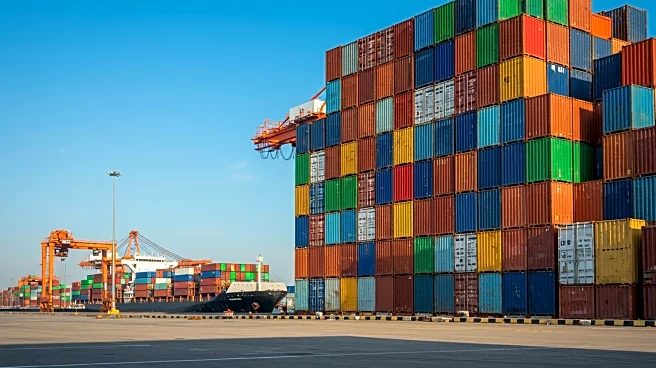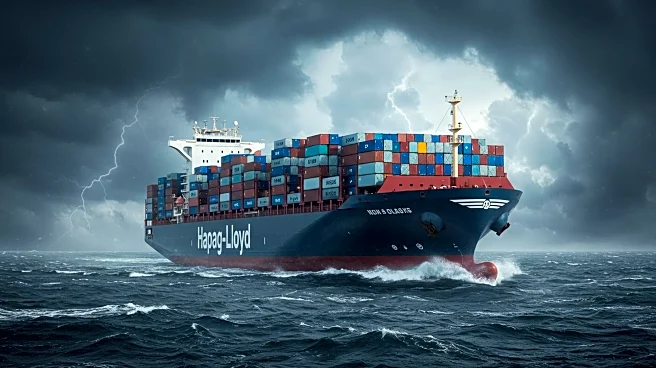What's Happening?
The Ports of Los Angeles (POLA) and Long Beach (POLB) experienced record-setting volumes in July, driven by importers pulling forward goods in anticipation of potential tariff hikes. POLA reported a total volume of 1,019,837 Twenty-Foot Equivalent Units (TEU), marking an 8.5% annual increase and the highest monthly volume in its 117-year history. Imports reached 543,728 TEU, the highest monthly tally on record, while exports increased by 6% to 121,507 TEU. Empty containers rose by 10%, marking the highest monthly reading in four years. POLB also set a new July record with a total volume of 944,232 TEU, a 7% annual increase. Imports at POLB rose by 7.6% to 468,081 TEU, while exports decreased by 12.9%. The record volumes are attributed to importers bringing in cargo ahead of potential tariff hikes, with concerns about trade policy impacting American goods headed overseas.
Why It's Important?
The record volumes at these major ports highlight the ongoing impact of U.S. trade policies and tariffs on global supply chains. Importers are accelerating shipments to avoid potential tariff increases, which could lead to higher costs for businesses and consumers. The increase in imports suggests a buildup of inventory, which may affect future demand and shipping volumes. The uncertainty surrounding trade policies poses challenges for exporters, particularly in the agriculture sector, as they navigate potential barriers to international markets. The ports' ability to handle increased volumes efficiently is crucial for maintaining the flow of goods and supporting U.S. businesses amid shifting trade dynamics.
What's Next?
Looking ahead, POLA Executive Director Gene Seroka anticipates that port volumes may have peaked in July, with August estimates ranging from 850,000 to 900,000 TEU, potentially below August 2024 levels. The buildup of inventory could lead to a decline in volumes as the year progresses. POLB CEO Mario Cordero forecasts a 10% decrease in cargo in the second half of 2025 due to ongoing trade policy uncertainty, resulting in a flat year for volume. The ports will continue to monitor trade announcements from Washington and adjust operations to efficiently manage imports and exports.
